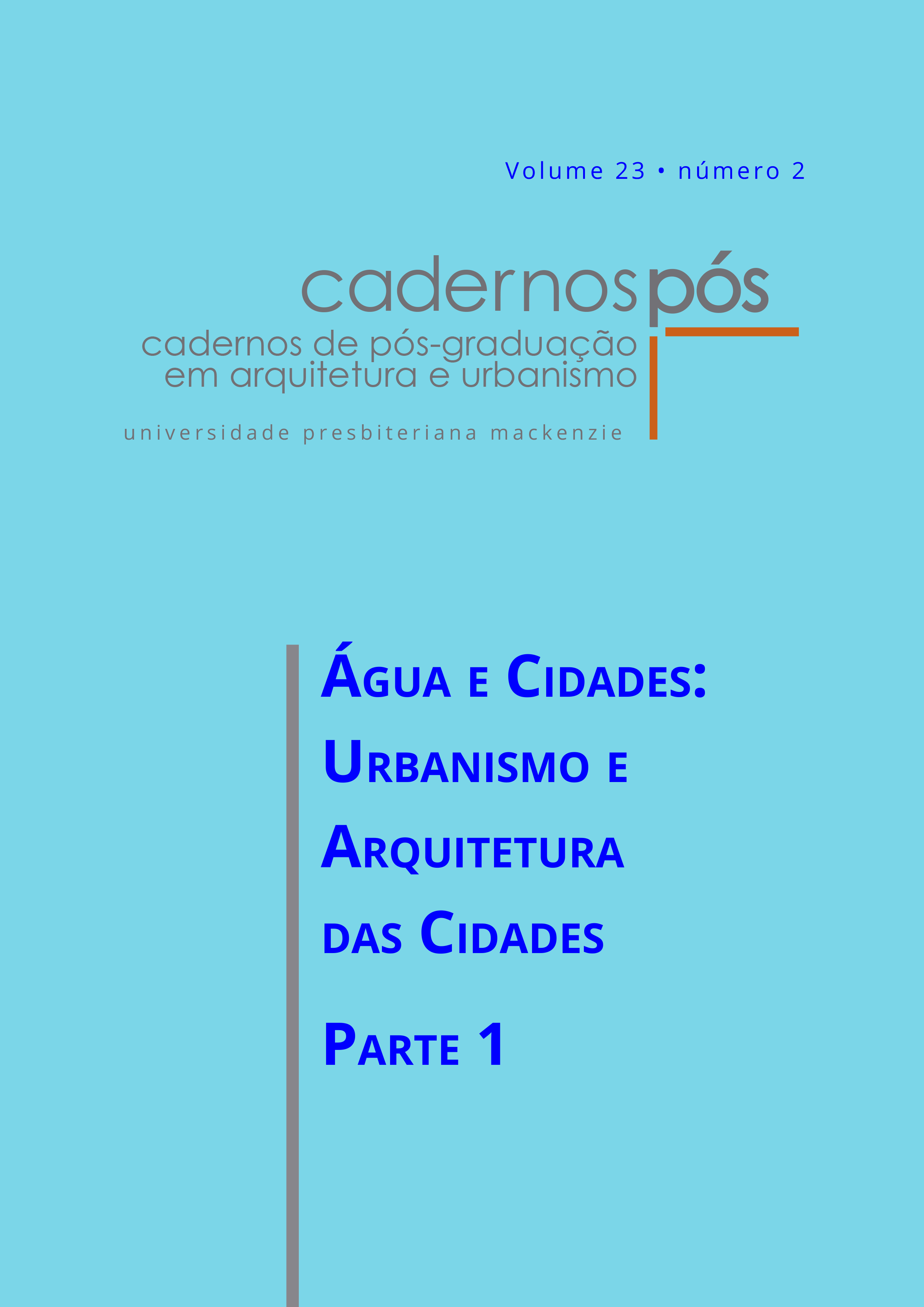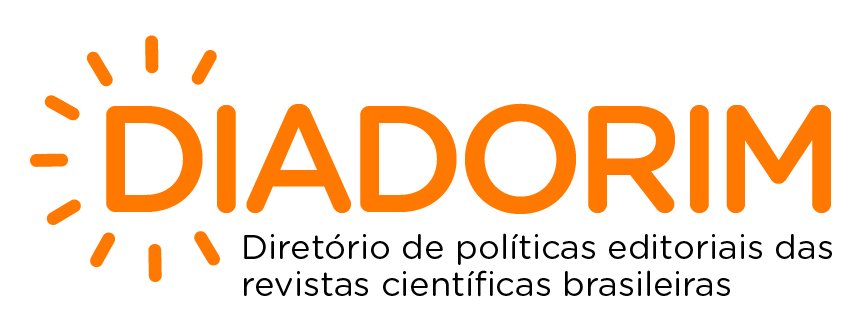The social components and the use of target images for the Piraquara River restoration in Realengo (RJ)
DOI:
https://doi.org/10.5935/cadernospos.v23n2p85-102Keywords:
River restoration, Social components, Target images, Piraquara RiverAbstract
This work addresses the challenge of balancing natural and urban objectives amidst the erasure of water bodies and disastrous floods, by sensitizing social agents involved in transforming territories. Specifically, the focus is on the reinsertion of rivers in cities, with an emphasis on recovering memory and perception of river landscapes and their impact on urban river restoration projects. The proposed solution is a conceptual structure that includes social components in prospective images, called target images. This structure was developed through a five-step process, including a general diagnosis, compartmentalization of the territory, historical research, qualitative interviews, and application of the conceptual structure. The case study used is the Piraquara River Sub-Basin in Rio de Janeiro, resulting in a new conceptual structure for reflecting on possible narratives and cultural repertoires of social agents involved in urban fluvial rehabilitation projects.
Downloads
References
BELL, S. D.; GRAHAM, H.; WHITE, C. L. Evaluating dual ecological and well-being benefits from an urban restoration project. MDP Sustainability, v. 12, n. 2, 695, 2020. https://doi.org/10.3390/su12020695
BURCH, C.; BUSCH, M.; HIGGINS, E.; BITTNER, S.; PERERA, N.; NEAL, K.; BURKETT, L.; CASTRO, A. J.; ANDERSON, C. Revisiting a Water Conflict in Southeastern Oklahoma 6 Years Later: A New Valuation of the Willingness to Pay for Ecosystem Services. MDPI Sustainability, v. 12, n. 3, 819, 2020. https://doi.org/10.3390/su12030819
CENTRO ITALIANO PER LA RIQUALIFICAZIONE FLUVIALE [CIRF]. La riqualificazione fluviale in Italia: linee guida, strumenti ed esperienze per gestire i corsi d’a acqua e il territorio. 1. ed. Venezia: Mazzanti Editori, 2006.
CORNER, J. Representation and landscape: drawing and making in the landscape medium. Word and Image: A Journal of Verbal/Visual Enquiry, v. 8, n. 3,
p. 243-275, 1992. http://doi.org/10.1080/02666286.1992.10435840
CORNER, J. The agency of mapping: speculation, critique, and invention. In: M. DODGE; R. KITCHIN; C. PERKINS (eds.). The map reader: theories of mapping practice and cartographic representation. New York: John Wiley & Sons, 2011. pp. 89-101. https://doi.org/10.1002/9780470979587.ch12
COSTA, R. N.; AZEVEDO, G. A. N.; PEDRO, R. M. L. Projetar-Com: o arquiteto como “autor-rede” em movimento. Gestão & Tecnologia de Projetos, v. 12, n. 2,
p. 103, 2017.
EUROPEAN UNION. EU Water Framework Directive (WFD). Commission Recommendation of 9 April 2013 on the use of common methods to measure and communicate the life cycle environmental performance of products and organizations. Official Journal of the European Union, Section L 327, p. 1-83, 2000.
FREIRE, D.; PEREIRA, L. L. História oral, memória e turismo cultural. In: UFMG (org.). Interpretar o patrimônio: um exercício do olhar. 1. ed. Belo Horizonte: Território Brasilis Consultoria, 2002. p. 121-130.
GINZBURG, C. Threads and traces: true false fictive. Los Angeles: University of California Press, 2012.
GUATTARI, F. As três ecologias. 11. ed. Campinas: Papirus, 2001.
HE, J.; PAN, Z.; LIU, D.; GUO, X. Science of the total environment exploring the regional differences of ecosystem health and its driving factors in China. Science of the Total Environment, v. 673, p. 553-564, 2019.
ILHA, A.; CASTRO, P. F. DE V.; PEDROSO, A. M.; SCHNEIDER, A. Trilhas: Parque Estadual da Pedra Branca. Rio de Janeiro: Inea, 2013. Disponível em: https://www.terrabrasilis.org.br/ecotecadigital/index.php/estantes/uso-publico-ecoturismo/2563-trilhas-parque-estadual-da-pedra-branca. Acesso em: mar. 2022.
JUNKER, B.; BUCHECKER, M.; MÜLLER-BÖKER, U. Objectives of public participation: which actors should be involved in the decision-making for river restorations? Water Resources Research, v. 43, n. 10, p. 1-11, 2007.
KONDOLF, G. M.; PINTO, P. J. The social connectivity of urban rivers. Geomorphology, v. 277, p. 182-196, 2017.
LEWIS, P. Axioms for reading the landscape. In: MEINIG, D. W. (ed.) The interpretation of ordinary landscapes: geographical essays. New York: Oxford: Oxford University Press, 1979. p. 11-32.
LYNCH, K. The image of the city. 1. ed. Cambridge: The MIT Press, 1960.
MARTINS, J. L.; AZEVEDO, J. P. S.; FIGUEIREDO, I. C. Estudo da qualidade hídrica da bacia do Rio Piraquara para análise da proposta de enquadramento do plano de recursos hídricos da região hidrográfica da Baía de Guanabara. Congresso Abes/Fenasan, n. 1, p. 1-8, 2017.
MCHARG, I. L. Design with nature. 2 ed. Philadelphia: The Flacon Press, 1971.
MINISTÉRIO PÚBLICO DO ESTADO DO RIO DE JANEIRO. In: Loco. [s.d.]. Disponível em: http://apps.mprj.mp.br/sistema/inloco/. Acesso em: 2 jun. 2022.
NARDINI, A. G. C.; CONTE, G. River Management & Restoration: what river do we wish for. MDPI Water, Switzerland, v. 13, n. 10, 1336, 2021. https://doi.org/10.3390/w13101336
NARDINI, A.; MIGUEZ, M. G. An integrated plan to sustainably enable the City of Riohacha (Colombia) to cope with increasing urban flooding, while improving its environmental setting. Sustainability, Switzerland, v. 8, n. 3, 2016.
OKAMOTO, J. Percepção ambiental e comportamento: visão holística da percepção ambiental na arquitetura e na comunicação. 2. ed. São Paulo: Plêiade, 1999.
OLIVEIRA, A. K. B. O sistema de drenagem como eixo estruturante do planejamento urbano: caso da Bacia Hidrográfica do Rio Acari. 2018. Dissertação (Mestrado em Engenharia Civil) – Universidade Federal do Rio de Janeiro, Rio de Janeiro, 2018.
PALMER, M. A.; BERNHARDT, E. S.; ALLAN, J. D.; LAKE, P. S.; ALEXANDER, G.; BROOKS, S.; CARR, J.; CLAYTON, S.; DAHM, C. N.; FOLLSTAD, SHAH, J.; GALAT, D. L.; LOSS, S. G.; GOODWIN, P.; HART, D. D.; HASSETT, B.; JENKINSON, R.; KONDOLF, G. M.; LAVE, R.; MEYER, J. L.; O’DONNELL, T. K.; PAGANO, L.; SUDDUTH, E. standards for ecologically successful river restoration. Journal of Applied Ecology, v. 42, n. 2, p. 208-217, 2005. Doi https://doi.org/10.1111/j.1365-2664.2005.01004.x
PINTO, P.; KONDOLF, G. M. The fit of urban waterfront interventions: matters of size, money, and function. MDPI Sustainability, Switzerland, v. 12, n. 10,
p. 1-17, 2020. https://doi.org/10.3390/SU12104079.
RAAPHORST, K.; ROELEVELD, G.; DUCHHART, I.; VAN DER KNAAP, W.; VAN DEN BRINK. Reading landscape design representations as an interplay of validity, readability, and interactivity: a framework for visual content analysis. Visual Communication, v. 19, n. 2, p. 163-197, 2020.
REES, R.; COSGROVE, D. E. Social formation and symbolic landscape. Geographical Review, v. 76, n. 1, p. 119-121, 1986. https://doi.org/10.2307/214798
RUQUOY, D. Situação de entrevista e estratégia do entrevistador. In: ALBARELLO, L. Práticas e métodos de investigação em Ciências Sociais. Lisboa: Gradiva,1997. p. 84-116.
SANTOS, B. S. A crítica da razão indolente: contra o desperdício da experiência.
ed. São Paulo: Cortez, 2002.
SANTOS, M. O território e o saber local: algumas categorias de análise. Cadernos Ippur, UFRJ, v. XIII, n. 2, p. 15-26, 1999.
STEINER, F. The living landscape: an ecological approach to landscape planning. Washington, DC: Island Press, 2008.
TUAN, Yi-Fu. Topofilia: um estudo da percepção, atitudes e valores do meio ambiente. Tradução Lívia de Oliveira. São Paulo: Difel, 1980. 288p.
ULLBERG, S. Watermarks: urban flooding and memoryscape in Argentina. 1. ed. Stockholm: Acta Universitatis Stockholmiensis, 2013.
VERÓL, A. P.; LOURENÇO, I. B.; FRAGA, J. P. R.; BATTEMARCO, B. P.; MERLO, M. L.; MAGALHÃES, P. C.; MIGUEZ, M. G. River restoration integrated with sustainable urban water management for resilient cities. MDPI Sustainability, Switzerland, v. 12, n. 11, 4677, 2020. https://doi.org/10.3390/su12114677
VERÓL, A.; BATTEMARCO, B. P.; SOUSA, M. M.; MIGUEZ, M. G. Requalificação fluvial: conceitos e casos de estudo. In: SCHIEBELBEIN, L. M. Gestão de recursos hídricos e sustentabilidade. 1. ed. Ponta Grossa: Atena, 2018. p. 17-33.
Downloads
Published
How to Cite
Issue
Section
License
Copyright (c) 2023 Julia Roizemberg Bahiana, Noêmia de Oliveira Figueiredo, Aline Pires Veról

This work is licensed under a Creative Commons Attribution 4.0 International License.
Authors who publish in this journal agree to the following terms:
a) Authors retain the copyright and grant the journal the right of first publication, with the Project simultaneously licensed under the Creative Commons Attribution License that allows the sharing of the Project with recognition of the authorship and initial publication in this journal.
b) Authors are authorized to assume additional contracts separately for the non-exclusive distribution of the version of the Project published in this journal (e.g., publishing in an institutional repository or as a book chapter), indicating that it was originally published in this journal, with a link to the article.








 Todo o conteúdo de Cadernos de Pós-Graduação em Arquitetura e Urbanismo está licenciado sob
Todo o conteúdo de Cadernos de Pós-Graduação em Arquitetura e Urbanismo está licenciado sob 